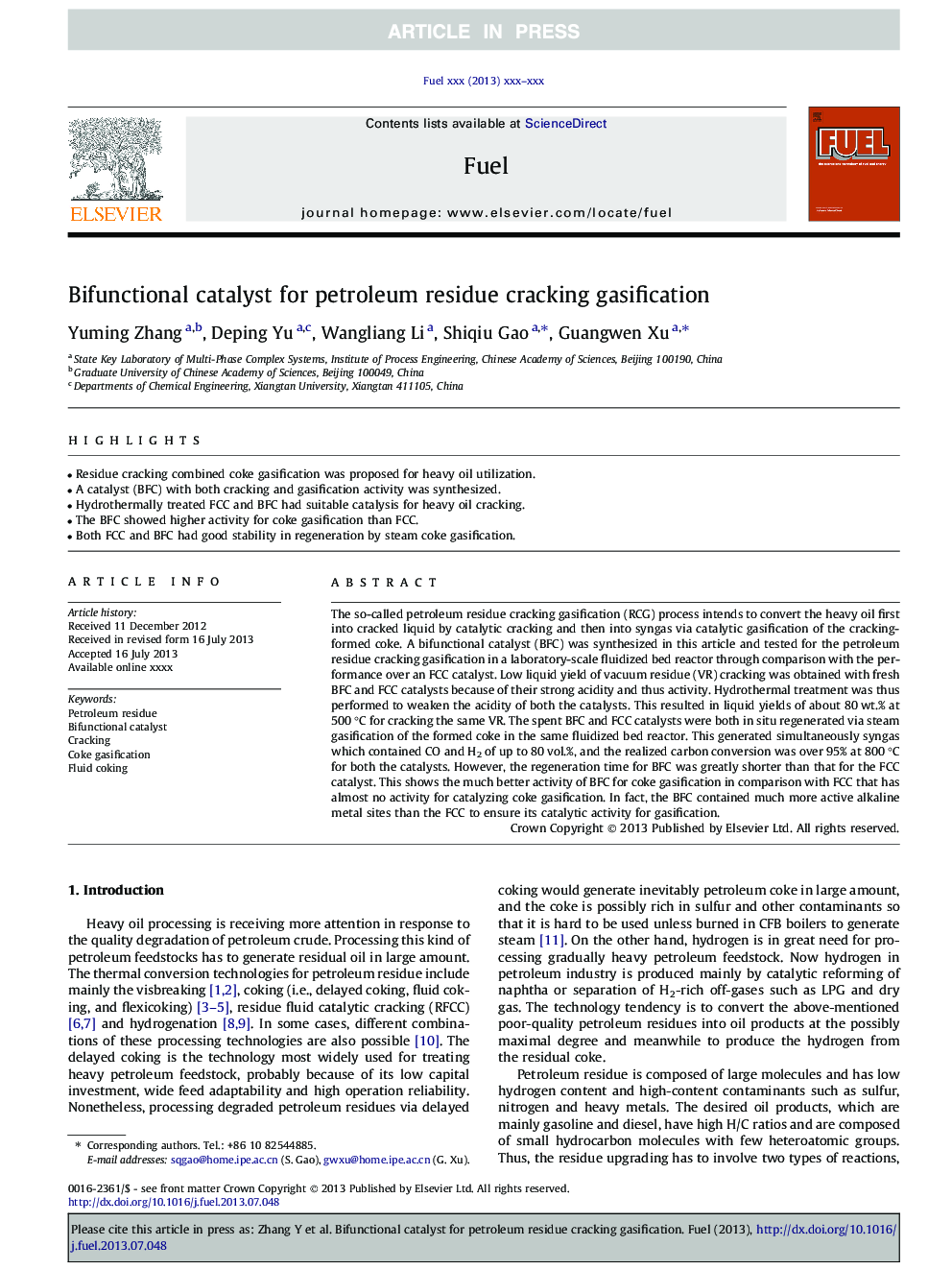| کد مقاله | کد نشریه | سال انتشار | مقاله انگلیسی | نسخه تمام متن |
|---|---|---|---|---|
| 10272246 | 461160 | 2014 | 8 صفحه PDF | دانلود رایگان |
عنوان انگلیسی مقاله ISI
Bifunctional catalyst for petroleum residue cracking gasification
ترجمه فارسی عنوان
کاتالیزور بی فاکتور برای گازسیون ترک خوردگی نفت
دانلود مقاله + سفارش ترجمه
دانلود مقاله ISI انگلیسی
رایگان برای ایرانیان
کلمات کلیدی
باقی مانده نفت، کاتالیست بیفکنیک، ترک خوردن، گازسوز سازی کک، ککینگ مایع
موضوعات مرتبط
مهندسی و علوم پایه
مهندسی شیمی
مهندسی شیمی (عمومی)
چکیده انگلیسی
The so-called petroleum residue cracking gasification (RCG) process intends to convert the heavy oil first into cracked liquid by catalytic cracking and then into syngas via catalytic gasification of the cracking-formed coke. A bifunctional catalyst (BFC) was synthesized in this article and tested for the petroleum residue cracking gasification in a laboratory-scale fluidized bed reactor through comparison with the performance over an FCC catalyst. Low liquid yield of vacuum residue (VR) cracking was obtained with fresh BFC and FCC catalysts because of their strong acidity and thus activity. Hydrothermal treatment was thus performed to weaken the acidity of both the catalysts. This resulted in liquid yields of about 80 wt.% at 500 °C for cracking the same VR. The spent BFC and FCC catalysts were both in situ regenerated via steam gasification of the formed coke in the same fluidized bed reactor. This generated simultaneously syngas which contained CO and H2 of up to 80 vol.%, and the realized carbon conversion was over 95% at 800 °C for both the catalysts. However, the regeneration time for BFC was greatly shorter than that for the FCC catalyst. This shows the much better activity of BFC for coke gasification in comparison with FCC that has almost no activity for catalyzing coke gasification. In fact, the BFC contained much more active alkaline metal sites than the FCC to ensure its catalytic activity for gasification.
ناشر
Database: Elsevier - ScienceDirect (ساینس دایرکت)
Journal: Fuel - Volume 117, Part B, 30 January 2014, Pages 1196-1203
Journal: Fuel - Volume 117, Part B, 30 January 2014, Pages 1196-1203
نویسندگان
Yuming Zhang, Deping Yu, Wangliang Li, Shiqiu Gao, Guangwen Xu,
